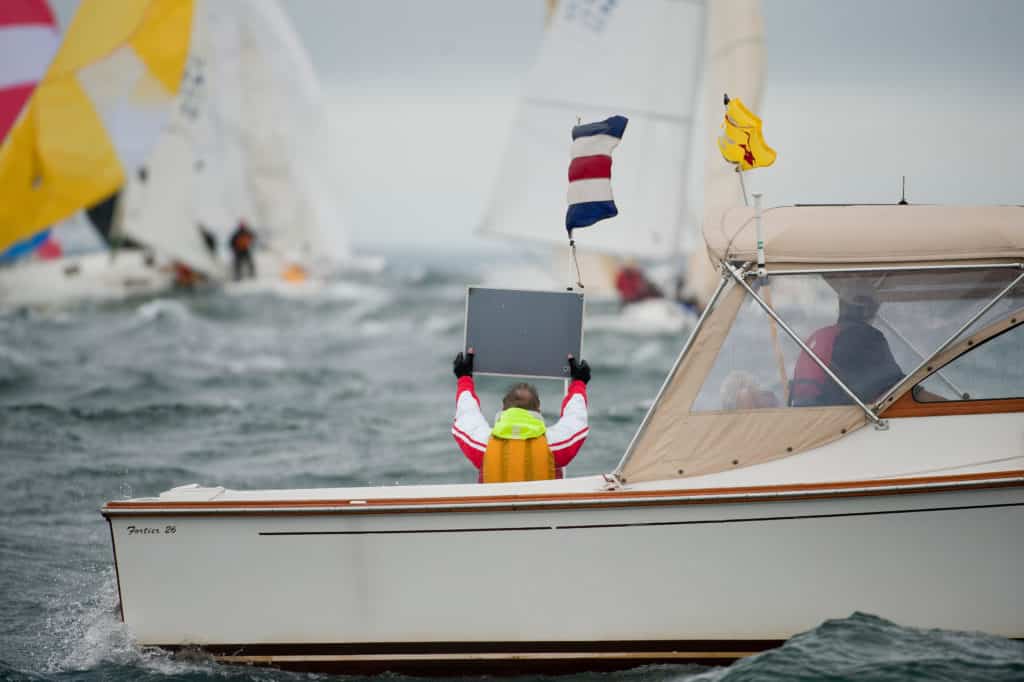
Course Change Signal
Keeping up with course changes during a race is always tough, especially because the announcements usually come while you’re in the middle of a busy mark rounding. But getting keyed into the change and quickly adjusting your game plan accordingly will help keep you a step ahead of the competition. Here are some tips on how to make that happen.
Listen to the radio. If your boat has a VHF radio for communicating with the race committee I suggest you always have two onboard. Two people listening will always be better than one. As a tactician I will always wear one around my neck, and the second one goes to the floater. The floater, or anyone else who does not have a huge boathandling role, is a good candidate.
Listen to the other classes. If you’re on a racecourse with more than one class start, and you’re not the first start, keep the radio turned up loud enough to hear the race committee. If there’s a course change for the class sailing out ahead of you, you’ll have a jump on the tactical options for the upcoming leg.
Understanding the tactical implications of the change. Most course changes happen at the first bottom mark for the next leg. In a lot of these situations the shift has already happened so it may (should) be straightforward. However, if you find these situations confusing, follow this basic principle: If the change is to the right then there’s a reasonable chance the right on the next leg may be better. Looking downwind, if the change is to the right then the priority is to go to the left gate with a clean exit and a lane. Conversely, if the change is to the left, then the same theory applies. Keep an open mind, however. Once you know the change, a quick tactical summary of the plan will allow for clear thinking after the fact.
What about if the change happens at the top? Normally when there’s a change for the run, the race committee will post the bearing (compass heading) to the new bottom mark. Very quickly, once out of the hoist, identify the compass heading onboard and how it lines up with the change. A quick comparison of the two will allow for the decision of getting onto the long jibe in clean air. Figure it out before the rest of the fleet does and you’ll get a jump on them.
Make sure everyone knows. When a change is signaled, repeat it aloud so everybody on the boat knows there is a change, as well as the direction the mark (or marks) are moving. I make a point of always telling the bowman because if the bowman hears about the change from the back of the boat, then the entire boat should hear it as well.
Click here to read more tips from Terry Hutchinson.









